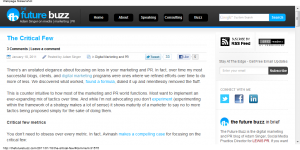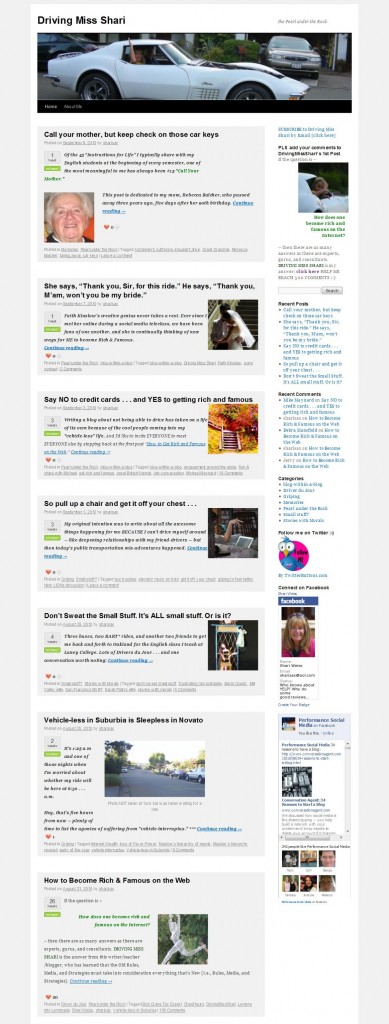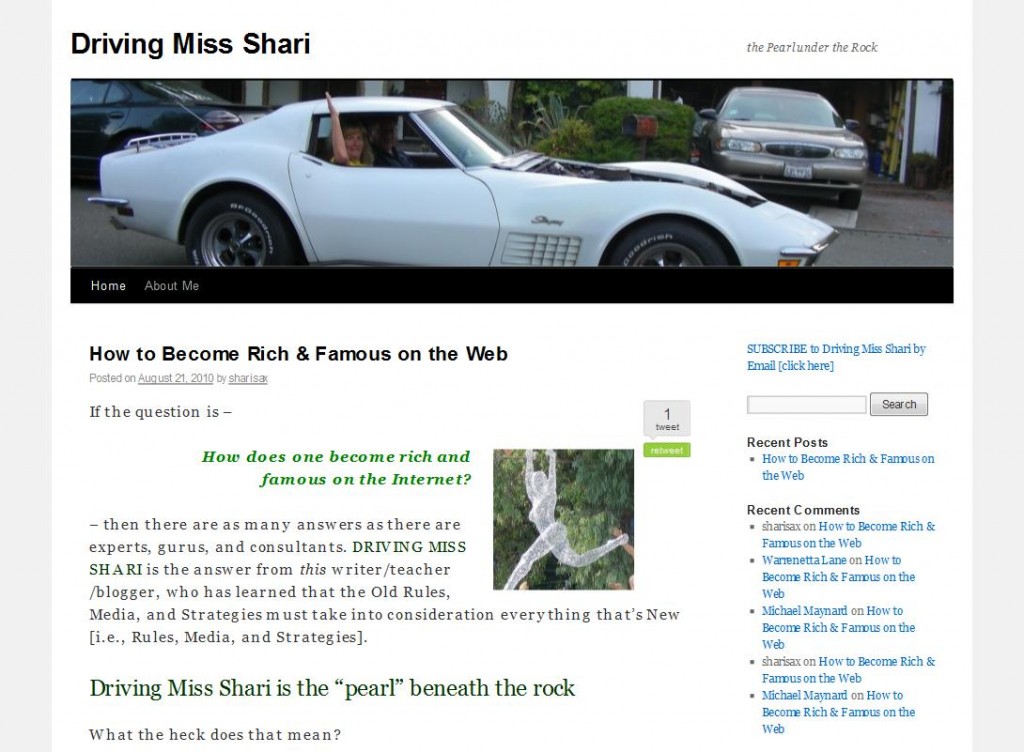 When deciding if you, too, should become a blogger, then tons of questions come to mind — and one of the first should be “Why do people read blogs?”
When deciding if you, too, should become a blogger, then tons of questions come to mind — and one of the first should be “Why do people read blogs?”
After all, if you are going to spend time and energy writing on the Global Whiteboard, you do want readers. So your blog plan needs to aim at a specific types of readers and give them what they want. That’s both Common Sense and Smart Marketing, i.e., define your target market and listen to what it is asking for.
The link in the subtitle above points to a data-rich webinar on blogging presented by Dan Zarrella, author of The Social Media Marketing Book and one of the Web’s online Go-To people for facts & figures on social media behavior. Currently a marketing product owner at HubSpot, Dan presented his latest research in a 60-minute Blogging webinar and slideshow. An hour listening to the webinar would be well worth your time; in the meantime however, you can read my Top Ten Takeaways from Dan’s research:
1. Relevance: People find blogs for the personal opinions and insights on topics they are particularly interested in — from people they have grown to trust.
2. Authority: Bloggers need to establish their credibility by delivering sound content and showing relevant background, education, and experience: however, calling oneself an “expert” or a “guru” is pretentious — and often sneered at.
3. SEO: Blogs offer great search engine optimization opportunities, particularly in helping consumers make purchasing decisions. Growing numbers of people are checking online and reading blogs to find information on items they want to buy.
4. Positivity: People do not go online to be brought down; they prefer the positive to the negative.
5. Avoid self-reference: Best practice is to talk AS yourself, not ABOUT yourself. People want to read your opinions, insights and unique point of view — not your minute-to-minute activities.
6. KISS: [Keep It Simple Stupid]: Avoid technical jargon; simplify, simplify, simply (as Thoreau) advises.
7. Novelty: Do not be boring, especially by regurgitating what others keep talking out. Try to provide content that is uniquely yours.
8. Social Proof: Use words like you, how, why, giveaway, money, etc. that are most often LIKED, SHARED, and ReTWEETED. You can find Dan’s lists of these words in the slides accompanying the webinar.
9. Frequency: The more often you post, the more readers you are likely to attract. Publishing once a day — or more — is the fastest way to become the Go-To Source for your area of expertise.
10. Know your audience: Are they mostly male? female? What are their schedules? How can you best serve their needs?
For further information about WHY and HOW to blog, check out some of my past articles:
To Blog . . . or Not To Blog . . . that is a good First Question
How to start a blog — Step by Step
How to write your first blog post on WordPress.com
What should your first blog post be about?
Use your blog to become the Go-To Source for information in your area of expertise
Avoid these NINE Blogging Errors
Beginning Bloggers Workshop: what should you blog about?
Will a blog help you build your business and other typical blog questions
10 Lessons I learned about blogging from my first 6-part series
Any more questions? Perhaps I’ll do a blog to answer.

 My online friend and blog role model Adam Singer, whose creative thoughts have always inspired me, just wrote a post entitled “The Critical Few” in which he advocates paring down, rather than ramping up, the number of online touch points you (or your company) uses.
My online friend and blog role model Adam Singer, whose creative thoughts have always inspired me, just wrote a post entitled “The Critical Few” in which he advocates paring down, rather than ramping up, the number of online touch points you (or your company) uses. 

 n
n fl
fl –
– ns)
ns) 

















